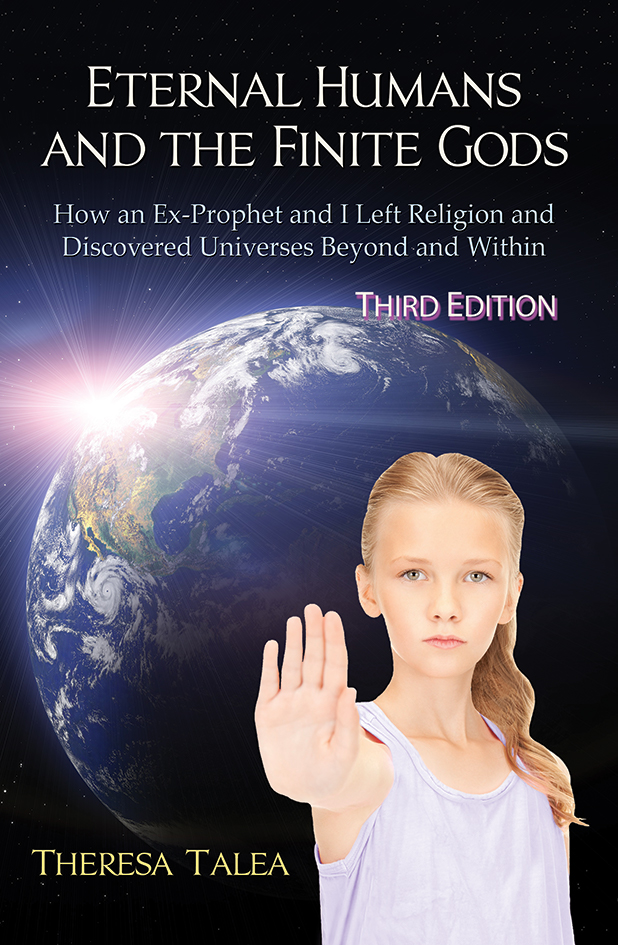Three Main Steps to Fully Come out of Religion
Religions are institutionalized structures of thought that frame material and immaterial creation in a certain way. They can starkly differ from one another or vary in only minute details. They can be present in any school of thought in which defined laws or theories are presented such as in philosophy and science. They do not allow change. When new information arises, proper scientists and philosophers would welcome it into a new paradigm, not hold fast to a small piece of the puzzle that is possibly disproven.
Often times, when people come out of a boxed-in belief, they enter another belief encapsulated by a differently sized box. This is why it is highly important to analyze one’s internal belief to uncover its root and understand whether it is congruent to the core of one’s self and outer reality. This practice can best view the big picture, so a belief will no longer be just a belief—it will represent reality.
I am not someone who likes to create a specific step-by-step process for everyone to follow because this does not allow for the individual process. Therefore, I will present three questions that must be explored to determine if you are in a religion, no matter how watered down your perception of that “religion” may be.
1. Does your belief employ magical thinking?
Something does not come out of nothing. Reality involves substance of some sort that can affect at least one of our senses which include senses beyond the physical five (sight, sound, touch, taste, smell). There is a sixth sense “seen” by our pineal gland or third eye. There is also a seventh sense “known” in our inner consciousness as intuition that can be “felt” deeper in our core self above the physical location known as the gut feeling. We share these natural abilities in some measure that provide a collective map of us and our surroundings. This map is our reality with which we are grounded in our bodies to the best of our inborn abilities.
Religions take us out of reality when saying, “Anything is possible,” “God can do anything,” “God is everything,” or “We will be free, perfect, happy, etcetera after death…or on Earth only if we have positive faith.” These are statements of absolutes that contradict our experiences here. Sure, situations can be improved outside of Earth, but extremely polarized thinking contradicts the nature of our entire universe where there are measured differences of separation and connection, not the absence of either.
The New Age religion, for example, escapes into nonduality and bliss. It perceives a utopia of no polarity where everything is subsumed as some sort of God Source blob. Everything has a foundation, so this source would actually be omnipolar, not nonpolar, to produce polarity. In addition, this Source is galactic or cosmic where there is still diversity of creation. Diversity in any amount implies measures of separation and differences. Instead of throwing out all these creational components in an unrealistically uniform idea or hive mentality, we can see such diversity as a harmonious existence that knows how to coexist instead of view life in a black and white, all or nothing way. Then, we will not see our current reality as fake or an illusion because it is built with very real but somewhat fragmented creational material.
2. Does your belief teach death as a process of life?
This is a common but irrational saying. Something dead cannot be alive or create life; death ends life. However, religions put a spin on this belief by teaching that true life starts after death, as though our life here isn’t life, and by deduction our humanity is essentially worthless. Ouch, I don’t like this one bit. Thankfully, #1 shows us that this is magical thinking.
Let’s look into this idealistic life after Earth if it is entirely free of death science. Do we see any utopia in our universe that was created by the Big Bang? The religious Gods are either in our universe or supposedly creators of it, so they are part of death science as well. The New Age religion’s “sacred science” geometries, which include both the vesica piscis and Metatron’s Cube with its 2-dimensional hexagon, are prominent in church and city designs. Its “Flower of Life” is comprised of both geometries. Accordingly, the “Tree of Life” grid is missing its upper central region akin to its heart. How is this true love and life if one’s heart is missing?
Life is constructed with different energy matter than what is in death science. Life precedes death and exists independently of it. A galactic or cosmic body containing subatomic “spirit” must consist of energy matter with full integrity, meaning that it exists by its own self-regenerative components and abilities that do not drain another’s existence toward decay and death. Eternal energy is known by what I call our seventh sense because it provides our fundamental basis for existence. This means that eternal energies, although intuitively known, comprise another type of universe(s) beyond the gods.
3. Does your belief have us look outward for the answers from otherworldly beings?
When we connect to entities who do not fully divulge themselves and who talk with authority, we are keeping that religious energy and by default those entities with us. How can you be free if they are continually in your personal field? It is time to cut the energetic cord to interfering entities and re-establish our personal boundaries and worth.
A true friend will give you space and respect you for who you are, loving you and knowing that you have value. Friends will see you as an equal—no hierarchy, just peaceful coexistence in this vast universe and beyond.
When each of us takes care of oneself to the core, we not only take responsibility for ourselves, but we take back our power. We regain our natural abilities and understand that all living creation desires true love, life, and safety to our cores. We see that each of us is more whole than fragmented, so we do not need to perpetuate imbalance by debasing ourselves and lifting up external entities. We learn from others, but to elevate those answers at the expense of oneself shoots us in the feet and leaves us non-questioning, docile servants who do not take the initiative to solve our own issues and think for ourselves. When we take care of our own home, that is the grassroots effort that heals communities, and sustainable communities create a sustainable planet. Frankly, religious entities can learn from us in this regard.
When we honestly and diligently explore these three questions, and we open ourselves past both unrealistic ideals and rigid restrictions, we allow our respective inner, true selves to release the chains with which religious energies and entities have restrained us. We can gain that precious space of freedom that allows us to see this world and beyond with opened eyes. Every step in this process counts, whether it be a probing question or realization, because its forward momentum moves us toward self-actualization.


